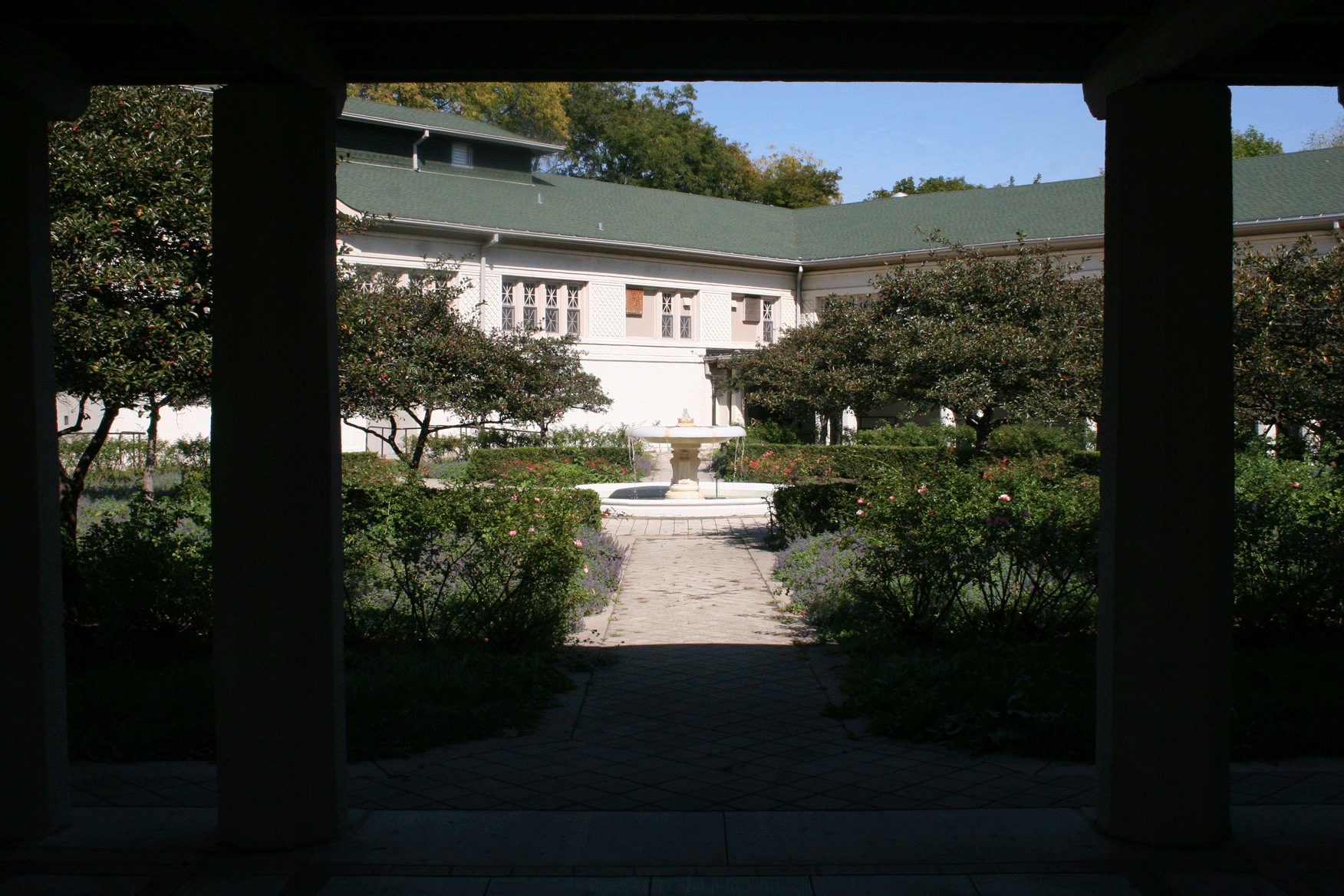Just east of New City is one of the smallest community areas in the city, Fuller Park. Located near the stockyards and the railroads the first residents of the area found work nearby. The neighborhood grew following the Great Chicago Fire since it was still part of Lake Township at that time and did not have as strict building codes as the city adopted in its rebuilding era. The area was annexed in 1889.
During the late 19th century the city was grappling with many public health concerns such as pollution in the lake and river from sewage and the stockyards, illnesses such as respiratory diseases, dysentery, and cholera, as well as poor living conditions and sedentary lifestyles. One of the major pushes to overcome these challenges was to build more parks. In 1869 John H. Rauch published Public parks: their effects upon the moral, physical and sanitary condition of the inhabitants of large cities; with special reference to the city of Chicago. In this piece, he addressed the benefits of public parks and discussed how they can improve public health.
“Parks have been aptly termed ‘the lungs of a city.’ They are emphatically the people’s gardens, – places to which the overtasked laborer and mechanic of the overcrowded city can, with his wife and children, resort to breathe the breath of God’s pure air, inhale the odors of fresh, blooming flowers and enjoy the pleasures of a rural retreat on a larger scale, amid far richer vegetable forms, than in the gardens created by mere private opulence. … I think it is not presuming too much to say that the climate of Chicago may be materially modified, and rendered more equable, by the proper location of parks, and the planting of trees, thereby diminishing the mortality of preventable diseases, and improving the general health.”
Between 1903-1905 the South Park Commission planned and implemented a system of neighborhood parks. Designed by the Olmsted Brothers landscape architects and D.H. Burnham & Co. architects these large parks featured gymnasiums, swimming pools, and the world’s first field houses. Fuller Park is one of these neighborhood parks. Spanning 11.41 acres it has a fountain, swimming pool, playground, sport fields, tennis courts, and a fieldhouse with a kitchen, fitness center, auditorium, and meeting rooms.
Fuller Park has always been an impoverished neighborhood. The stockyards, which served as one of the largest employers in the area, declined in the 1960s and finally closed in 1971. This disinvestment came towards the end of redlining. During redlining the area had a D rating, the lowest rating used. Appraisers gave the area the following description,
“Located between 35th and 63rd, Wentworth to Halsted, a mixed area consisting of foreigners, mostly Lithuanian and Italian. Colored people are on Tremont, between Normal and the railroad. Many railroad yards, shops, etc., are in the area, with a poor class of property adjoining them. Stockyard odors are detrimental when the prevailing wind is from the west; stockyard location is at 43rd to 47th, Halsted to Western. This has a tendency to soften returns and depress sales. Area improved somewhat south of Garfield where there are more single homes. Transportation is not good, especially in the north section. It is better south of Garfield. On Union are many poor frame houses, with a few 2’s; and south of Garfield the situation improves somewhat both as to brick, frames and 2’s. On Lowe are a number of frames, old, in fair condition. 63rd and Halsted is a good business location, ranking with Uptown as an excellent retail section, notwithstanding the class and occupation of the surrounding districts; Sears Roebuck have one of their largest, modern retail stores here. The Gar Wood Industries, Inc., are on 37th west of Wentworth. Another blighted area.”
Today, the area described includes all of Fuller Park and a little bit of New City, Armour Square, Bridgeport, and Englewood. South of Garfield Blvd is Englewood, which, unlike Fuller Park, was a neighborhood that thrived in the first half of the 1900s.
Disinvestment continued in the last half of the 20th century. From 1975-1990 the stockyards area lost over 41% of jobs. In the 1980s the neighborhood received fewer home improvement loans than any other in Chicago and no new housing was built between 1969-2004.
Even with a lack of investment as recently as 20 years ago neighbors continue to work together to improve the area. In 1997 resident Michael Howard learned that Fuller Park contained the highest levels of lead in the city of Chicago. Concerned with the health and safety of his family and neighbors he decided to start by cleaning up the illegal dump site across the street from his home. He acquired the deed to the property and over the course of three years he and his wife worked with hundreds of neighbors and volunteers to clean up the three acre parcel of property that housed mounds of waste over two stories tall. Following the clean up the space was developed with tons of fresh soil, a gazebo, storage sheds, trees, and even a reflecting pond.
The Eden Place Nature Center harks back to the late 19th century ideas regarding the importance of nature and parkland. Founded by Amelia and Michael Howard, the couple has dedicated themselves to giving back to the community. They’ve provided financial literacy programming, job training, and through Eden Place Farms they teach how to farm and connect with nature in an urban setting.
Although the community is still plagued by environmental problems that have developed through its history the work done at Eden Place has made a very big difference in helping Fuller Park move forward.
http://www.encyclopedia.chicagohistory.org/pages/490.html
https://www.loc.gov/item/agr09002522/
https://www.chicagoparkdistrict.com/parks-facilities/fuller-melville-park
https://www.chicagoparkdistrict.com/about-us/history-chicagos-parks
https://en.wikipedia.org/wiki/Fuller_Park,_Chicago
https://news.wttw.com/2022/06/16/chicago-tonight-your-neighborhood-fuller-park


 Facebook
Facebook
 X
X
 Pinterest
Pinterest
 Copy Link
Copy Link
